{english below} “Murder in the front row” es un documental que ahonda en el nacimiento del thrash. Le da voz a un grupo heterogéneo de personas que tomaron parte en esta escena musical. Lo interesante del documental es que huye de protagonismos y de la idea del genio creador aislado. Vamos a escuchar diferentes voces: músicos, dueños de discográficas, editores de fanzines… que subrayan la pluralidad de experiencias y sensibilidades que configuraron el nacimiento del thrash.
El punto de partida del documental es su propio libro homónimo, ¿qué fue lo que prendió la mecha?
Conocí a Brain Lew en 2009, cuando Metallica fue admitido en el Salón de la Fama del Rock n Roll, nos hicimos amigos y unos años más tarde me encontré con él en un concierto de Metallica y me dio el libro que escribió con Harald Oimoen llamado “Murder In The Front Row”. Me enganché, las imágenes eran muy vivas y llenas de energía, sabía que sería un gran documental.
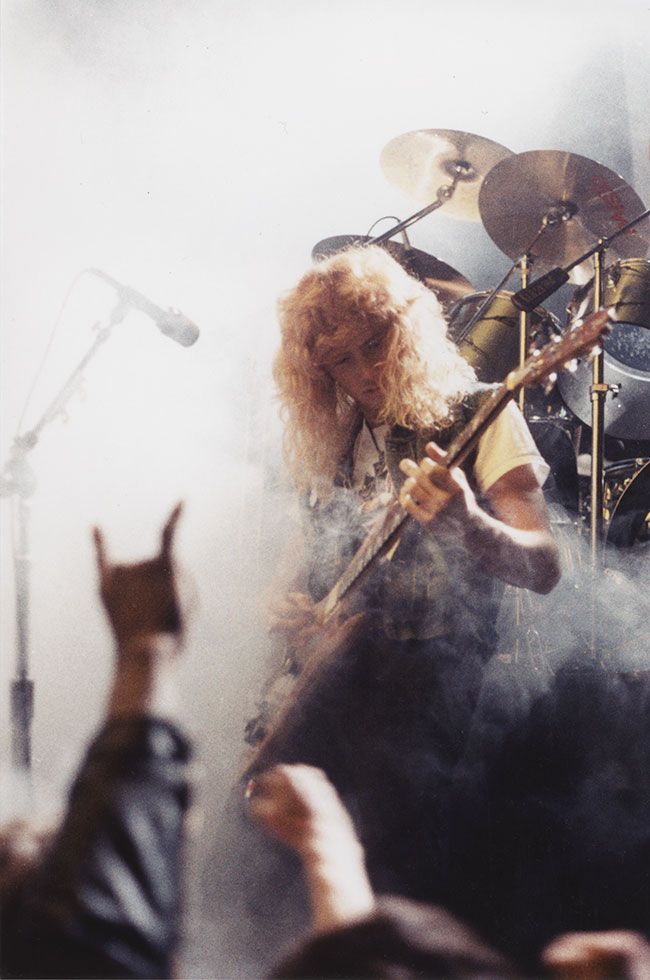
“Murder in the front row” es principalmente un libro de fotografías; comentas que fue al ver las fotografías cuando te preguntaste por las personas que salían en ellas. Hay un misterio en las imágenes que dispara nuestra imaginación ¿verdad?
El libro Murder in the front row es en su mayoría fotografías con algún texto y algunos escritos. Miré las fotos y supe que había algo más en ellas ¿Qué estaban pensando esos chicos en ese momento? Tenía que averiguarlo.
¿Qué papel tuvieron los autores del libro en la creación del documental?
Mi productor, Jack Gulick, y yo sabíamos que lo correcto era incluir a Harald y Brian en nuestra historia y mantenerlos involucrados. Los entrevisté para la película al principio y fueron nuestros constantes asesores durante el rodaje. Muchas películas cometen el error de dejar fuera a los autores, nosotros no lo hicimos, eran una fuente constante de información que valía la pena.

¿A tu juicio, quiénes fueron los arquitectos del sonido thrash?
En algún momento alguien decidió que había un Big Four de thrash metal, Metallica, Megadeth, Slayer y Anthrax. No sé quién lo decidió pero debería ser un Big Five porque Éxodus es como la base del thrash. En la película Murder In The Front Row, James Hetfield dice que “Kill ‘Em All” y “Bonded By Blood” son gemelos en cierto modo. Ahí lo tienes, del maestro.
¿Qué productores y estudios fueron importantes?
Realmente no tengo una opinión sobre qué productores y estudios fueron importantes porque no creo que hayan jugado un papel tan crucial como los propios músicos. Los músicos como Dave Mustaine grababan thrash dondequiera que estuvieran con quienquiera que estuvieran. Por eso son geniales.
Cuando se crea un nuevo lenguaje, musical en este caso, es siempre de creación colectiva, ¿es este uno de los ejes del documental?
Lo que me interesaba de contar esta historia era que un grupo de jóvenes estaban creando un nuevo género musical como ellos querían. Tenían influencias, pero lo llevaron a otro nivel, y gran parte de esa actividad tenía que ver con Bay Area.

Adam Dubin
Otro de los protagonistas del documental es la propia San Francisco, ¿cómo de importante es el contexto en el que surgen las cosas?
Empecé la película dando una rápida lección de fondo en la escena musical de Bay Area, que tiene una larga historia de apoyo a la música y a los músicos. Así que tiene sentido que la escena thrash se ponga en marcha allí junto a una próspera escena punk y que a veces se crucen. Utilicé la animación en la película para mostrar la geografía de Bay Area porque pensé que era importante que los espectadores entendieran dónde ocurría esto.
¿Qué has descubierto sobre el thrash en este documental?
Que no es únicamente estilo musical; también fue, y es, un movimiento cultural.

¿Qué importancia tuvo el Eastern Front Festival en la consolidación del género?
El Eastern Front festival, en 1984, fue organizado por el promotor de Ruthie’s Inn Wes Robinson y reunió a varias bandas de thrash, metal y punk en East Bay. Se conoció como Day In The Dirt. Mostró el cruce entre diferentes estilos de música dura. Wes fue un importante innovador musical por su programación y muy querido por los músicos de Bay Area por darles apoyo.
Son muy interesantes los primeros momentos de construcción de un proyecto, cuando éste empieza a tomar forma y hay muchos caminos abiertos, ¿cómo empezaste a tirar del hilo de la historia?
El comienzo del documental es una de mis partes favoritas porque todo el mundo es joven, está hambriento y busca en las tiendas de discos la música que les gusta. Hetfield no era más famoso que el chico que pasaba por su lado. Todos están tratando de entenderlo. Algunos se convirtieron en músicos mientras que otros escribieron sobre la escena o tomaron fotos o dibujaron flyers. Todos contribuyeron porque amaban la música.

Muchas veces la historia deja huecos que es necesario solventar para que ésta tenga sentido ¿es este es el caso de Exodus?
Creo que Exodus es una historia increíble que necesita su propio documental. Sólo tuvimos tiempo de contar una parte de su asombroso viaje de 40 años.
¿Qué dirías que hay en común en las diferentes narrativas que encontramos en tu trabajo, desde los videoclips con los Beastie Boys hasta los documentales de Metallica?
En todo mi trabajo, me he esforzado por encontrar el poderoso corazón del rock and roll. Probablemente no lo sabía al principio, cuando dirigía a los Beastie Boys sólo intentaba hacer un buen trabajo y conseguirlo, pero al mirar atrás siento que los videos de Beastie capturaron a esa banda en ese momento y te dieron lo que son en ese momento. “Murder In The Front Row” captura ese momento, el espectador siente que está recibiendo una lección de historia de los que estuvieron allí; es la verdad del rock and roll.
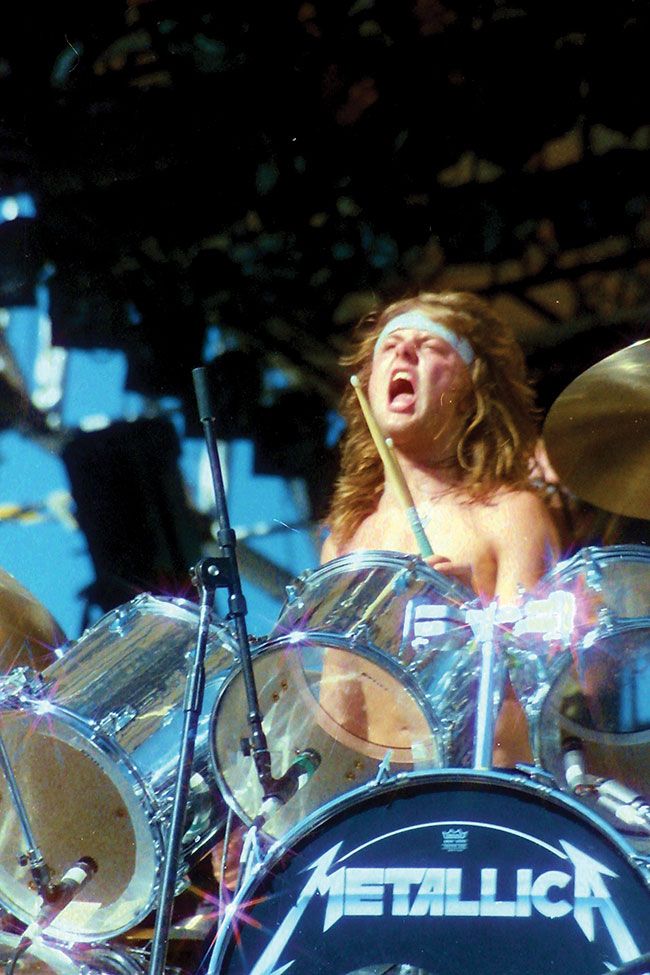
¿Cuál es tu momento favorito del documental?
Me encantan muchos momentos de “Murder In The Front Row”, pero mis partes favoritas son cuando le di a la gente una foto para que se miraran a sí mismos más jóvenes y se transportaron atrás en el tiempo al verla. Era como ver la magia ocurrir de nuevo, especialmente cuando Kirk habla de lo mucho que significó para él y Cliff tocar en “Day On The Green” porque eran de Bay Area.
¿Qué dirías que hay en común en las narrativas que abarcan tu trabajo, desde los Beastie Boys hasta este último documental?
Un punto en común en todo mi trabajo es el humor. No es que todo sea divertido, pero hay humor en la vida, en los buenos y en los malos tiempos. Siempre he sido capaz de encontrar momentos divertidos y hacerlos brillar, hace que ver mi trabajo sea más divertido. Obviamente, con The Beastie Boys esto fue fácil, pero incluso cuando filmamos a Metallica en el estudio y las cosas eran más serias, había momentos divertidos y siempre los ponía porque rompían la tensión. Los chicos de Metallica tienen un gran sentido del humor, así que es divertido incluirlo en cualquier parte.
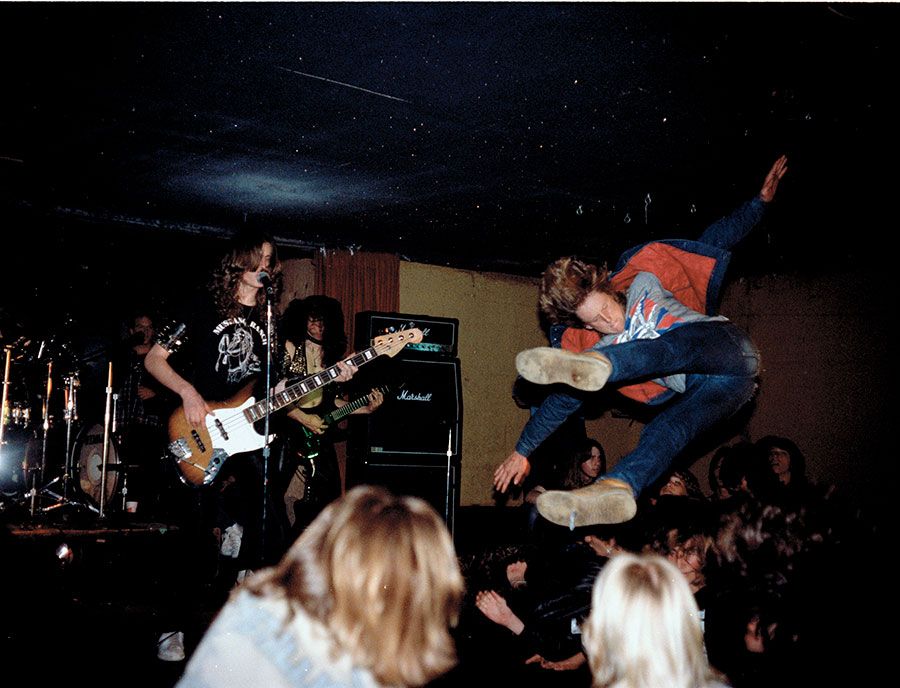
Acotar una historia, es en cierta forma cerrarla. Da la impresión de fin de una época ¿Con la disolución de Metallica se cerrará una página de la historia de la cultura popular del siglo XX?
La cultura popular es un tema bastante grande y no creo que Metallica sea lo más cercano a la cultura pop del siglo XX, aunque son una fuerza muy grande. Si “Murder In The Front Row” muestra algo, es que Metallica fue parte de un movimiento más grande de thrash metal. Cuando Metallica deje de trabajar, la música thrash continuará con los millones de músicos que han influenciado.
Las diferentes subculturas jóvenes han sido capaces de crear o plantear otros mundos ¿cuál piensas que era el imaginario del thrash?
El thrash proviene de muchas fuentes, algunas de ellas de la fantasía tipo Dragones y Mazmorras y otras de las duras realidades de la vida cotidiana. Gran parte del contenido de las canciones era sobre la escena que estaban viviendo como “A Lesson In Violence” de Exodus. El thrash metal continuará mientras la gente sienta una conexión con esa música. Está siendo transmitido ahora mismo a nuevas bandas de thrash. Al final de la película puse a la banda Metal Allegiance que ha estado haciendo nueva música thrash metal con algunos de los creadores mientras tocan clásicos del thrash también. Hay otra joven banda de thrash de Bay Area llamada Hell Fire que son absolutamente fantásticos.
www.mitfr.com
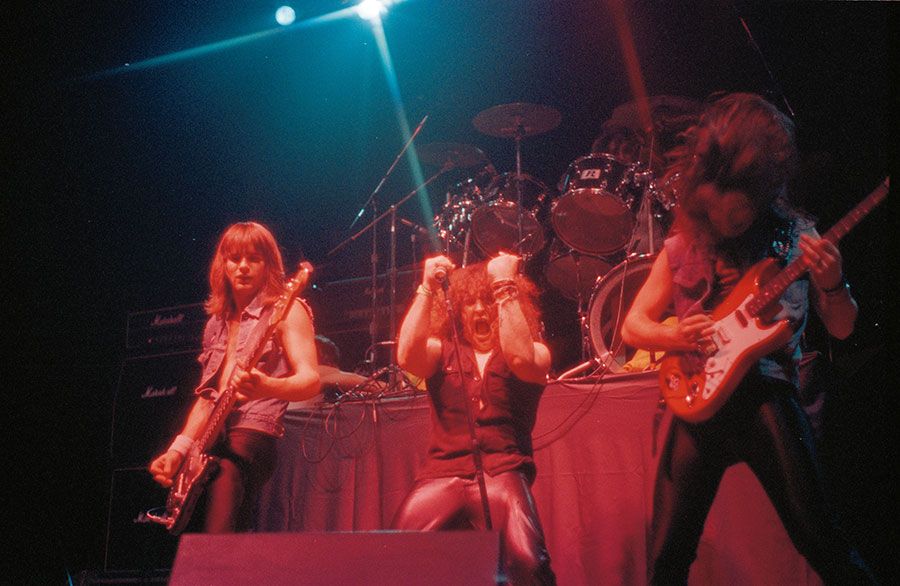
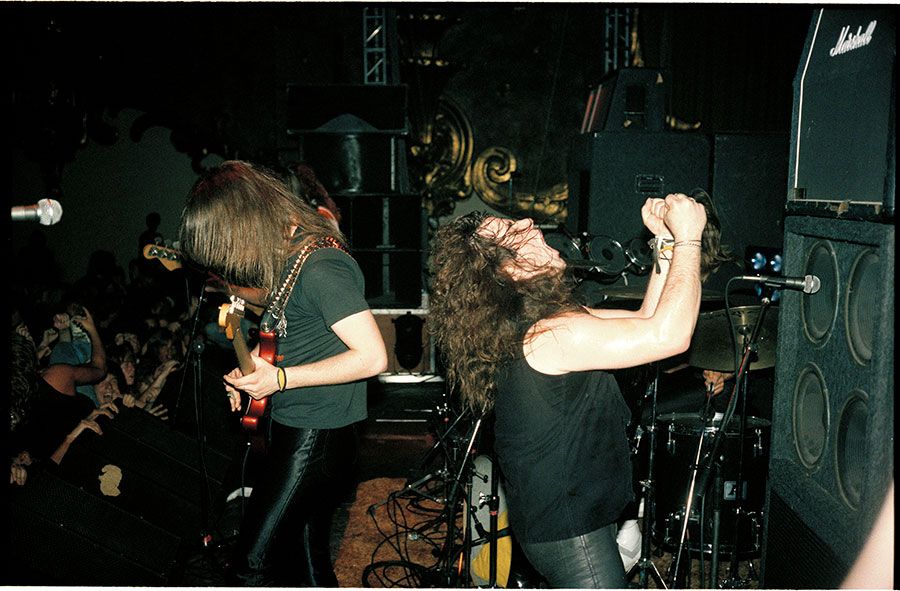


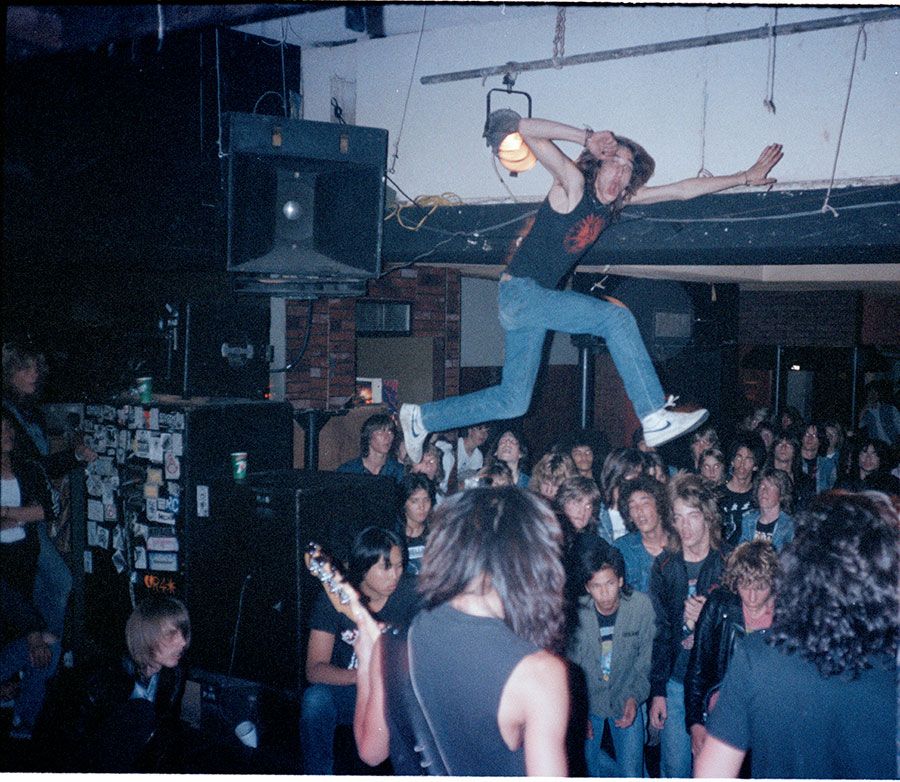
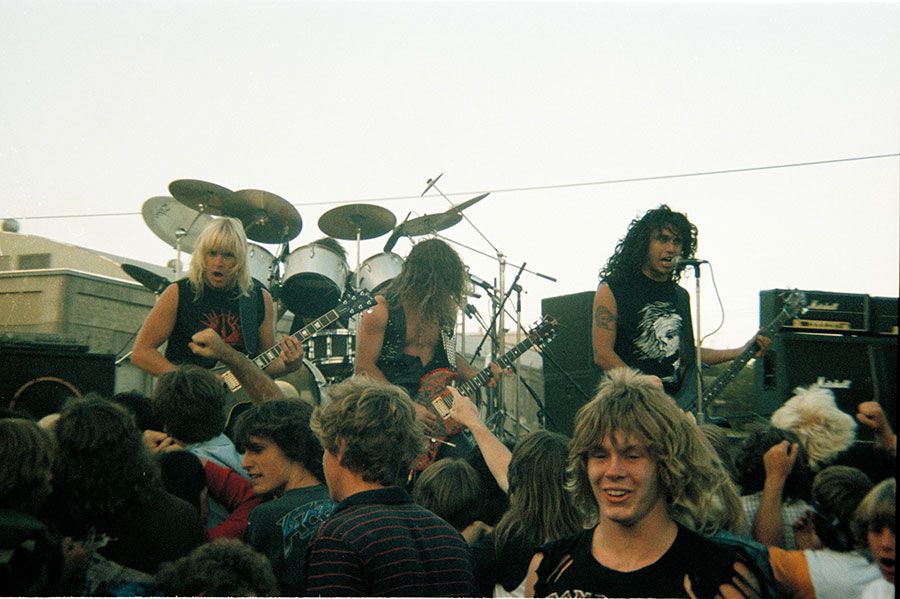
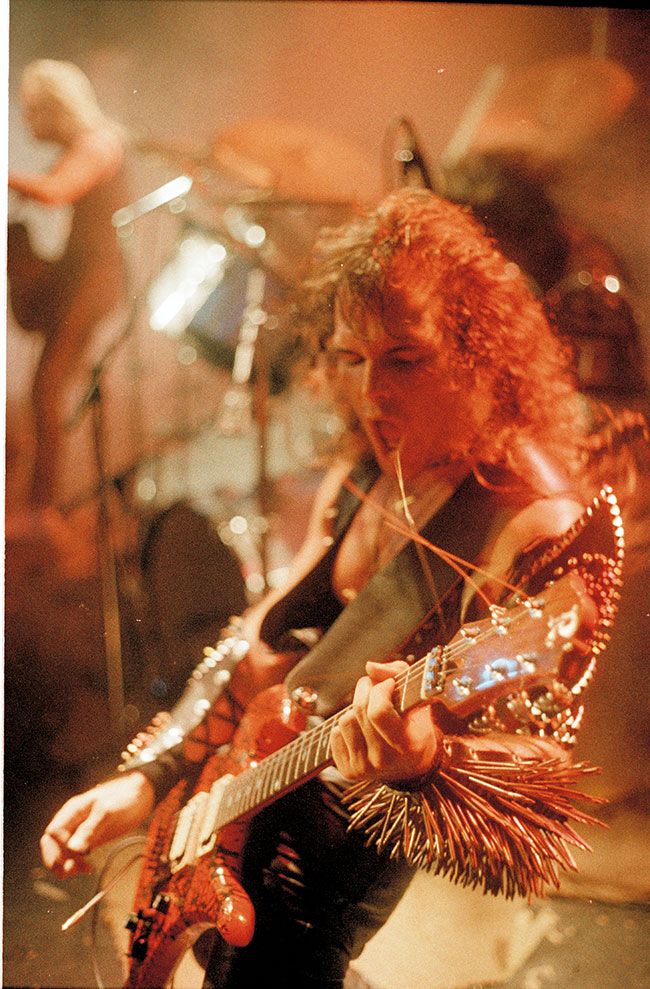
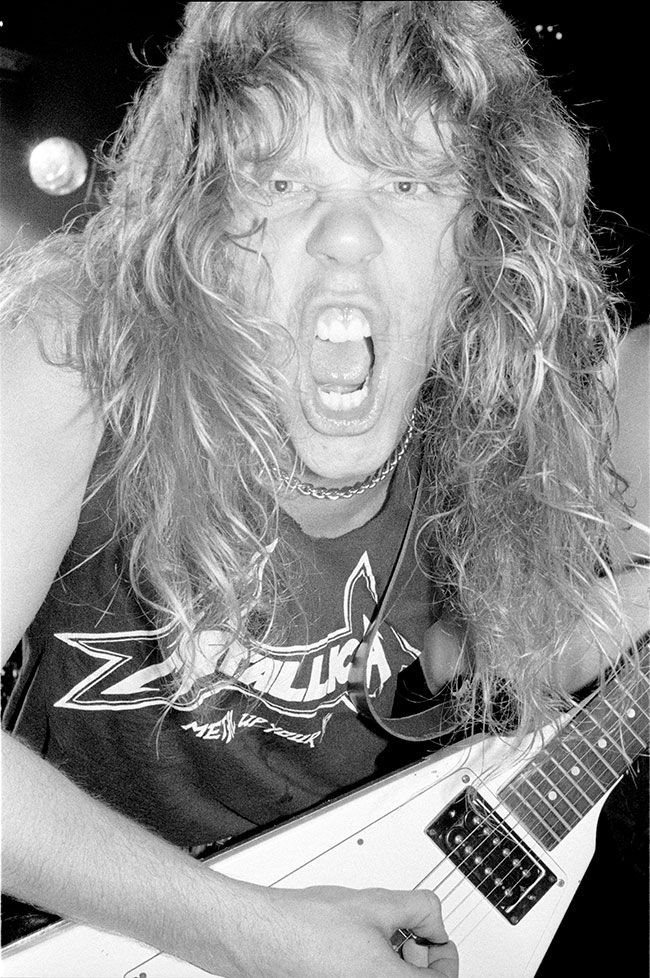
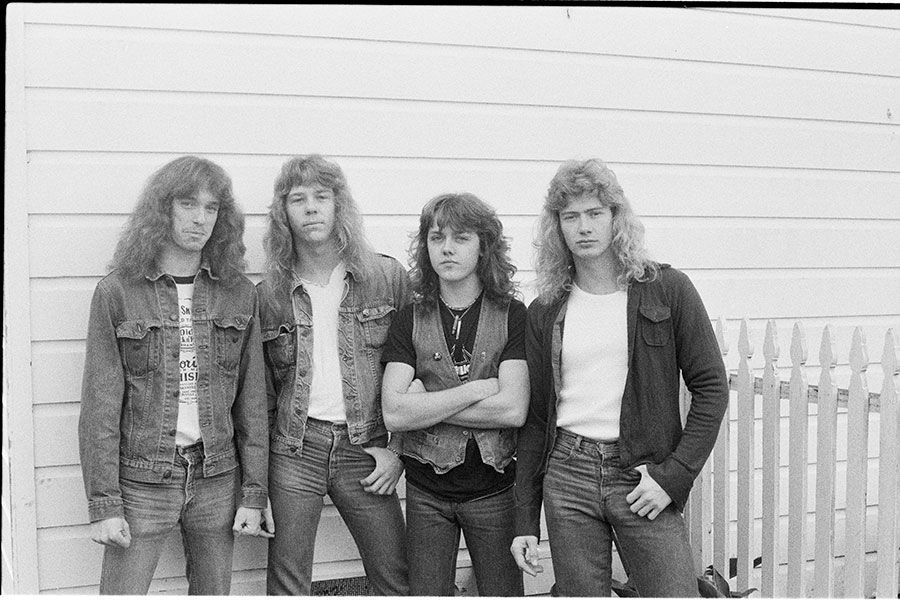
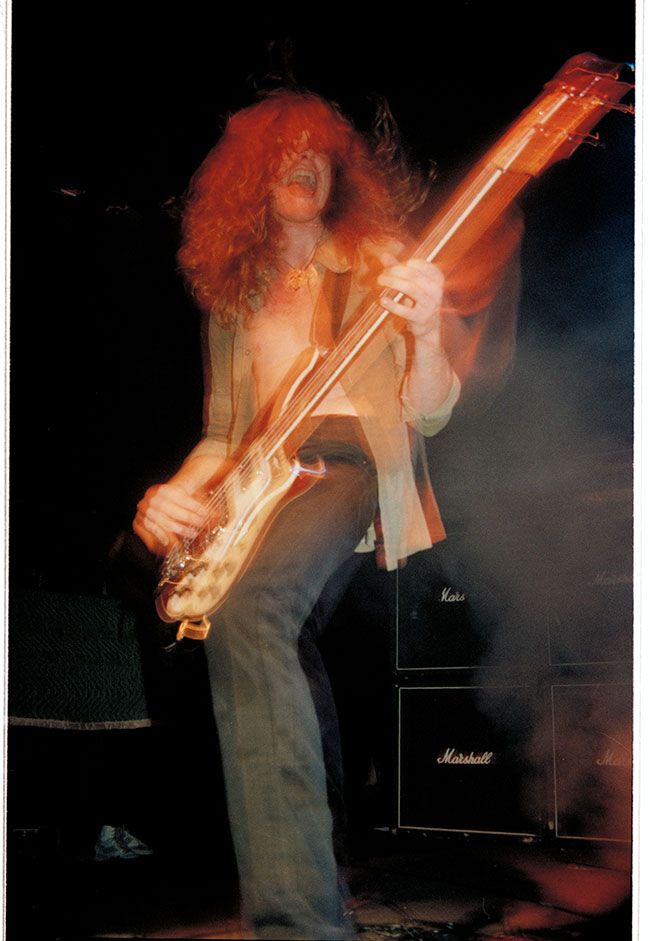
English:
MURDER IN THE FRONT ROW. THE BIRTH OF A MUSICAL GENRE.
“Murder in the front row” is a documentary that dives into the birth of thrash. It gives voice to a diverse group of people who took part in this musical scene. The interesting thing about the documentary is that it avoids protagonism and a certain idea of the isolated creative genius. We are going to hear different voices: musicians, record company owners, fanzine publishers… who emphasize the plurality of experiences and sensibilities that shaped the birth of thrash.
The starting point of the documentary is a book of the same name. What lit the fuse?
I met Brain Lew in 2009 when Metallica was inducted into the “Rock n Roll Hall of Fame”. We became friends. A few years later I ran into him again at a Metallica concert and he handed me the book he wrote with Harald Oimoen called “Murder In The Front Row”. I was hooked. The pictures were so vivid and full of energy. I knew it would make a great documentary.
Murder in the front row is mainly a book of photographs. You say that when you saw the photographs you started to wonder about the people in them. There is a mystery in the images that triggers our imagination, right?
The book “Murder In The Front Row” is mostly photographs with some text and a few write ups. I stared at the photos and I knew that there was more going on in there. What were those kids thinking back then? I had to find out.
What role did the authors of the book play in the creation of the documentary?
My producer Jack Gulick and I knew that the right move was to involve Harald and Brian in our story and keep them involved. I interviewed them for the movie in the beginning and they were our constant advisors throughout the making of the film. So many films make the mistake of leaving out the authors. We didn’t. They were a constant source of information that paid off every time.
In your opinion, who were the architects of the thrash sound?
At some point someone decided that there was a Big Four of thrash metal, Metallica, Megadeth, Slayer and Anthrax. I don’t know who decided this but it should be a Big Five because Exodus is like the foundation of thrash. In the movie Murder In The Front Row, James Hetfield says “Kill ‘Em All” and “Bonded By Blood” are twins in a way.” There you have it from the master.
Which producers and studios were important?
I really don’t have an opinion about which producers and studios were important because I don’t think that played as much of a part as the musicians themselves. Thrash musicians like Dave Mustaine recorded thrash wherever they were with whomever they were with. That’s why they’re great.
When a new language is created, musical in this case, it is always of collective creation. Is this one of the axes of the documentary?
The thing that interested me about telling this story was that a group of young people were creating a new musical form the way they wanted. They had influences but they took it to someplace else. And much of that activity had to do with the Bay Area.
Another of the protagonists of the documentary is San Francisco itself. How important is the context in which things arise?
I started the movie by giving a quick background lesson in the Bay Area music scene. The Bay Area has a long history of supporting up and coming music and musicians. So it makes sense that the thrash scene would get going there right alongside a thriving punk scene and sometimes they crossed over. I used animation in the movie to show the geography of the Bay Area because I thought it was important for viewers to understand where this happened.
What have you discovered about thrash in this documentary?
Thrash is a musical style but it was and is a cultural movement as well.
How important was the Easter Front Festival in the consolidation of the genre?
The Eastern Front festival in 1984 was organized by Ruthie’s Inn promoter Wes Robinson and it brought together various thrash, metal and punk bands in the East Bay. It became known as Day In The Dirt. The significance is that it showed the crossover between different styles of hard music. Wes was an important musical innovator for his programming and well loved by Bay Area musicians for giving them a head start.
The first moments of the construction of a project are very interesting, when it begins to take shape and there are many paths open, how did you begin to pull the thread of the story?
The start of the documentary is one of my favorite parts because everybody is young and hungry and searching record stores for the music that they love. Hetfield is no more famous than the kid standing next time him. They’re all just trying to figure it out. Some became musicians while others wrote about the scene or took photos or drew flyers. Everyone contributed because they loved the music.
Many times history leaves gaps that need to be filled for it to have full meaning. Is this the case with Exodus?
I think Exodus is an amazing story that needs its own documentary. We only had time to tell a portion of their amazing 40 year journey.
What would you say is common to the different narratives we find in your work, from the video clips with the Beastie Boys to the Metallica documentaries?
In all of my work, I have endeavored to find the powerful beating heart of rock and roll. I probably didn’t know it at first when I was directing the Beastie Boys, I was just trying to do a good job and get it done. But as I look back I feel that the Beastie videos captured that band at that moment and gave you who they are at that time. “Murder In The Front Row” captures that moment at this time. The viewer feels that they are getting a history lesson from those who were there. That’s a rock and roll truth.
What is your favourite moment of the documentary?
I love many moments in “Murder In The Front Row”. My favorite portions are when I gave people a photo to look at of their younger selves and they were transported back in time by viewing the photo. It was like watching magic happen. Especially when Kirk talks about how much it meant to him and Cliff to play at Day On The Green because they were from the Bay Area.
What would you say is common to the narratives that span your work, from the Beastie Boys to this latest documentary?
One common point in all my work is humor. It’s not that everything is funny but there is humor in life in good times and bad. I have always been able to find funny moments and make them shine. It makes watching my work more fun. Obviously with The Beastie Boys this was easy. But even when filming Metallica in the studio and things were more serious there were still funny moments and I always put those in because it breaks the tension. The guys in Metallica have great senses of humor so it’s fun to include that anywhere.
To limit a story is, in a way, to close it. It gives the impression of the end of an era. Will the dissolution of Metallica close a page in the history of 20th century popular culture?
Popular culture is a pretty big topic and I don’t think Metallica is the closer of 20th Century pop culture although they are a very big force. If Murder In The Front Row shows anything it shows that Metallica were just a part of a larger movement of thrash metal. Whenever Metallica stops working thrash music will go on with the millions of musicians they have influenced.
The different youth subcultures have had the ability to create or desire other worlds. What do you think was the imaginary in thrash?
Thrash pulls from a lot of sources, some of it from Dungeons and Dragons type fantasy and some of it from the hard realities of everyday life. Much of the song content was about the scene they were living such as Exodus’ “A Lesson In Violence.” Thrash metal will continue for as long as people feel a connection to that music. It’s being handed down right now to new thrash bands. At the end of the film I put in the band Metal Allegiance who have been making new thrash metal music with some of the originators while they are playing thrash classics too. There’s another young thrash band from the Bay Area called Hell Fire that are absolutely fantastic.